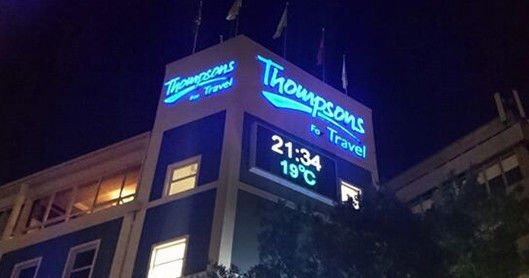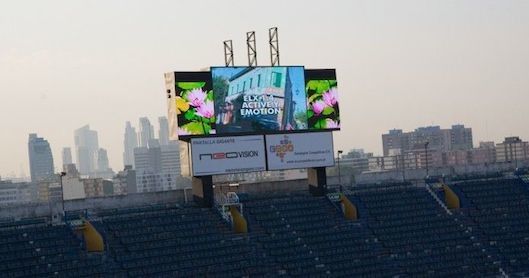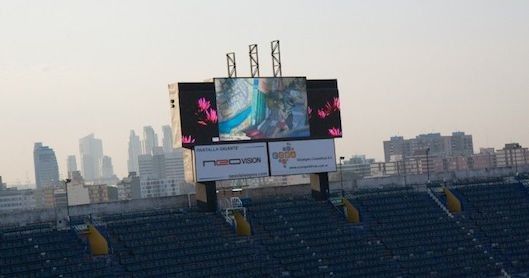Outdoor Fixed LED Display where is it going?
Outdoor Fixed LED Display where is it going?
Looking back at this year's OAAA/Geopath conference, I tried to review everything, find common themes in my mind and draw connections, and I kept thinking about it. The wise men have spoken a lot of wise words in speeches, group discussions and training seminars, but so far, there is one sentence that is the most important among all the people at the conference. In the keynote address of Rishad Tobaccowala, he said: "The future is not suitable for loading in the past containers."
Outdoor fixed led display are at the crossroads, one foot is in the future, and one foot is in the past. A few years ago, the forces that worked were technology and infrastructure. The most important thing now is behavior. In order to take full advantage of the excellent positioning properties of today's outdoor, we need to create new ways of behavior. The new behavior will create new containers that can accommodate the future of the outdoors.



I am also thinking that with strong capacity, we may expect the outdoor fixed led screen industry to grow faster, but this is not the case. Although it is still the only (except for digital) growing media channel, its share of the European market is still well below 8%.
So, what hinders the future? There is only one thing waiting outdoor fixed led billboard
That is to say, there are several key areas of behavior that clearly require new containers.
Audience monitoring is a new type of currency
The outdoor fixed led sign industry has been operating in a media monitoring system for many years. Traffic and DEC are the currencies of the market. Then, the phone appeared, and the paradigm shifted from the media to the audience. We can take advantage of the wealth of geography, itinerary, demographics, and most importantly, our behavioral information at your fingertips.
Location and behavioral data can and should be used for planning from the very beginning of marketing – starting with the market, specific media and digital strategies, and up to the day-to-day model.
At the back end of marketing campaigns, the ability to measure traffic, attribution, and ROI is quickly becoming an expected service for advertisers. Being able to tie real money to the outdoors is a long-lasting holy grail. Although it has not yet been fully formed, it is definitely closer to the goal than ever before.
What hinders us? The shift from monitoring media to monitoring audiences requires a major shift in philosophy. This is a deeply rooted thinking process that carries many years of tradition and burden. Interestingly, many start-ups and DTC brands—companies with less solidification—are more likely to accept this idea. For digital-native brands and agents working with them, audience-based targeting is completely natural. It doesn't matter where the ad is, as long as we know it can reach the right audience.
The outdoor fixed led screen industry needs to learn how to plan in this way. The rapid adoption of new monitoring systems, such as the Geopath Insights system, and the continued use of these numbers throughout the industry are key. In order to achieve this goal, we all need to promote higher levels of education in our own companies and customers.
The new container should be: "How does this plan reach my audience?"
The mobile phone year has never happened, maybe it is
In a lot of speeches, a joke is circulated, probably like this: "Remember how we have been the Year of the Year in the past 10 years?" This means that it has never really come. In a way this is true. Still, it's clear that many companies are committed to using mobile phones as an outdoor strategy.
The infrastructure is ready. Support data is available. So what is blocking us?
This is a tricky issue and there are still several problems. One is the lack of understanding in the outdoor. Can we admit that we all really understand how to plan effective mobile marketing campaigns and ask questions when they can solve problems? Are we just selling proposals to increase the scale of purchases? We can clearly express location-based digital media and Is the value of outdoor media integration?
It's no surprise that digital media is a very different species, with different terminology, monitoring methods, basic principles of basis, and so on. It is also changing at an incredible speed, so it's not hard to understand that we find it hard to keep up with it. In other words, it is imperative that we must educate ourselves enough to understand the value proposition and have a good understanding of the technology so that it can be applied wisely.
Another issue is the education of advertisers around numbers and outdoors. Both are completely independent media channels that carry distinct expectations. It requires advertisers to collaborate across existing media barriers between outdoor and digital teams and fully integrate the plan. And our education in our own industry should be 10 times that of our customers and advertisers.
The new container should be: "How does this plan integrate multiple location-based policies?"
Is the programmatic purchase ready?
Programmatic buying has been a hot word for the past few years, but it feels different now. It is there around us. Although there are still some technical problems to be solved, it is obvious that the train has left the station. It is also clear that we do not have enough understanding of what it is, how it is, and most importantly why.
I think programmatic (or automated) purchases are a complement, not a (at least for now) a large-scale replacement for the original purchase process. Programmatic will add an exciting new tool to the outdoor treasure house that will create efficiency and flexibility. It will provide a new perspective on the planning and attribution of each stage of the outdoor marketing campaign.
It will also help the outdoors and its new close friends - the numbers go closer. When they plan, purchase, execute, and monitor under a DSP, this helps to incorporate digital outdoor into the media plan and the larger overall budget configuration.
What hinders us from adopting and using programmatic digital outdoor? There are still some problems in the industry to solve. How do we sell? How will we monitor? Will all be digital outdoor, or will we still use traditional ways to purchase space? Most importantly, when should we use it?
The DPAA has issued initial standards and practices that answer many of these questions. But to be honest, how many of us actually read and understood all of the more than 80 pages. These standards are required for media providers, purchasing platforms, and agents. Therefore, we must educate ourselves and our customers to create new containers.
The new container should be: "How to use programmatic buying as a strategy to enhance media planning?"
Integrated marketing is the future of the outdoor fixed led display


